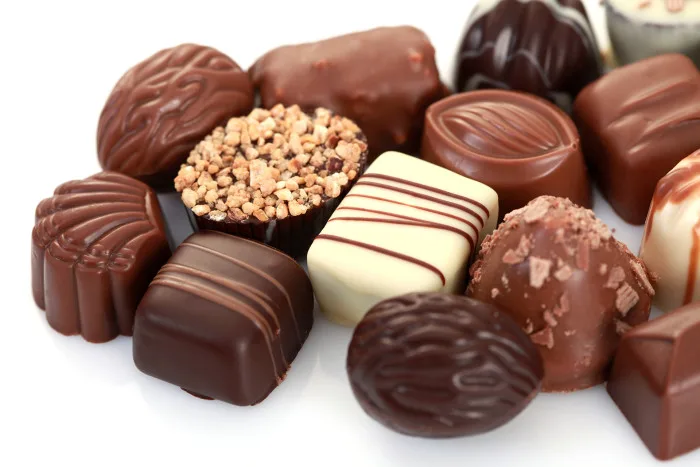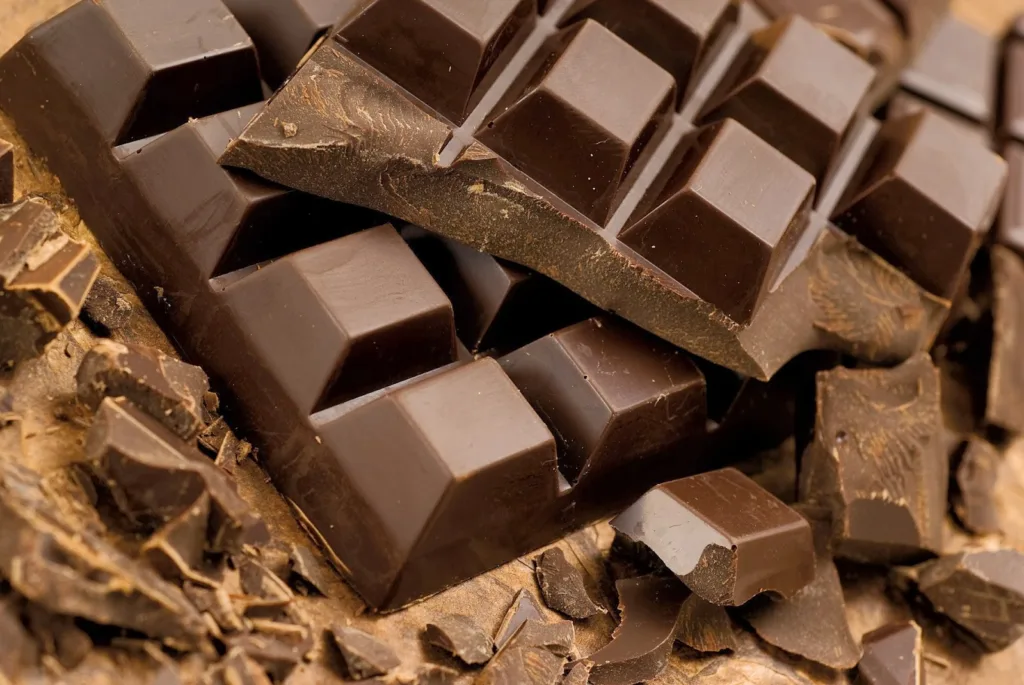Introduction
Chocolate. Just reading that word is enough to ignite a longing in any sweet tooth. One bite of chocolate’s smooth, rich decadence is hard to resist. Is it any wonder that chocolate is one of the world’s most beloved foods? But when you’re trying to lose weight, it’s easy to feel guilty reaching for a chocolate bar. After all, chocolate is typically high in sugar, fat, and calories – all diet villains.
Yet cutting out chocolate completely feels cruel for true chocoholics. The good news is that with some mindful strategies, you really can enjoy chocolate as part of a healthy diet and lifestyle. In this blog, we’ll explore the unique appeal of chocolate, how to choose optimal types of chocolate, delicious recipes to satisfy cravings, and techniques to integrate chocolate into your routine in moderation. Consider this your license to uncover the healthiest ways to indulge in chocolate’s magic – without sabotaging your weight loss.

Why Is Chocolate So Irresistible?
To understand chocolate’s hold over us, we have to look at the science. Chocolate contains compelling chemical compounds that interact with our brains in ways that release feelings of pleasure and mood enhancement. Specifically, chocolate includes molecules like theobromine, phenylethylamine, tryptophan, and anandamide.
Theobromine is structurally similar to caffeine and acts as a very mild stimulant. Rather than the intense high and later crash from caffeine though, theobromine provides a more subdued lift in energy.
Then there’s phenylethylamine, which promotes the release of feel-good neurotransmitters dopamine and serotonin. Scientists believe this gives chocolate its mood-boosting abilities – similar to how amphetamines increase dopamine.
Chocolate also contains tryptophan, an amino acid and precursor for serotonin. Tryptophan enhances relaxation and emotional well-being.
Finally, anandamide works on the same brain receptors that are activated by THC in cannabis. This leads to feelings of bliss and euphoria.
No wonder scientists have revealed that eating chocolate activates more regions of the brain associated with pleasure and reward than any other food!
The Chocolate Lover’s Dilemma
For those trying to lose weight, this poses a real dilemma. On one hand, chocolate is physically and emotionally gratifying unlike anything else we eat. Just a bite feels like a treat. On the other hand, most conventional chocolate bars are packed with sugar, fat, and calories – all detrimental to weight loss.
Milk chocolate, for example, contains upwards of 30 grams of sugar in a typical bar. The added milk fat and lower cocoa content also reduce chocolate’s potential health benefits. For dark chocolate lovers, portion control is still key, as even 70-85% dark chocolate has 15+ grams of fat and 400+ calories per 3.5 ounce bar.
So is it possible to balance our chocolate obsession with being mindful of excess sugar, fat, and calories? Absolutely! Read on for tips.
Finding the Healthy Chocolate Balance
My aim with this blog is to empower chocolate addicts to find a place for chocolate in a healthy diet and lifestyle. Of course, chocolate doesn’t contain protein, vitamins, or minerals beyond trace amounts. It shouldn’t become a dietary staple. But with some guidelines on optimal chocolate types, portion control, and tasty recipes, chocolate can be integrated into your routine in moderation. Consider this your permission to discover healthier ways to satisfy chocolate cravings without derailing your weight loss goals!

Which Type of Chocolate Is Best?
With so many chocolate options lining store shelves, it can get confusing to decipher which types are best aligned for weight management. Let’s break down the differences:
Lean Toward Dark Chocolate
Overall, dark chocolate is the clear winner if you’re aiming to lose weight. Dark chocolate contains at least 35% cocoa solids and minimal added milk fats and sugars. The higher the cocoa percentage, the lower the sugar. Stick to chocolate with 70% cocoa content or above. Here’s why:
- The cocoa in dark chocolate provides antioxidants called flavonoids, which may lower blood pressure and cholesterol.
- Dark chocolate has a low glycemic index, meaning it won’t cause major blood sugar spikes.
- Theobromine gives dark chocolate its feel-good lift without the crash of caffeine products.
- Dark chocolate has been shown in studies to alleviate anxiety, boost mood, and promote satiety.
For weight loss, dark chocolate in small portions can curb cravings and deliver health advantages. Just watch your serving sizes.
Limit Milk Chocolate
Milk chocolate is more challenging for weight management for a few reasons:
- It contains high amounts of added sugar, usually over 30 grams per bar. This adds excess calories without nutrition.
- The milk fat and lower cocoa percentages reduce the antioxidant content compared to dark chocolate.
- Blood sugar is likely to spike and crash after eating milk chocolate, often making you crave more sweets later.
- Portion control is extra essential for milk chocolate, as the sugar and fat calories add up quickly.
While the occasional small treat of milk chocolate is fine, limit overall intake if you’re aiming for weight loss.
Avoid White Chocolate
White chocolate is difficult to reconcile with weight loss efforts. Technically, white chocolate doesn’t contain any actual cocoa solids, only cocoa butter. It also includes high amounts of sugar and fat without antioxidants present in other chocolate varieties. Since white chocolate is lacking in nutrients, it’s best to avoid it or only eat it rarely in very small servings if trying to lose weight.

Healthy Ways To Include Chocolate
Now that we know which types of chocolate align best with weight loss, how much and how often should you actually eat it? Here are some healthy guidelines:
Stick To Small Servings
Regardless of whether you eat dark, milk, or white chocolate, PORTION CONTROL is key for weight management. Here are suggested serving sizes if weight loss is a goal:
- Dark chocolate: Opt for a 1-2 ounce serving of at least 70% cacao. This gives you the benefits of chocolate without excess calories.
- Milk chocolate: Limit to a 1 ounce portion, and sparingly. Be mindful of sugar content.
- White chocolate: Restrict to a few small bites up to 1 ounce maximum due to high calorie and sugar content.
Focus On Cocoa Content
Scan labels and choose chocolate with at least 70 percent cocoa content or higher. The more cocoa, the more antioxidant benefits. And higher cocoa means lower sugar, making it more weight loss friendly.
Enjoy Chocolate Mindfully
Rather than guiltily plowing through a chocolate bar, savor each bite slowly. Let the chocolate melt on your tongue. Pay attention to textures and flavors. Allow yourself to fully enjoy the experience. Mindful eating heightens satisfaction.
Use Chocolate As A Mini-Reward
While chocolate shouldn’t be an everyday food if you’re losing weight, it can be used as a small pick-me-up or reward a few times per week. Just be cautious of portion creep.
Balance With Other Foods
To keep calories in check, pair chocolate with more nutritious foods like fruit or nuts. Or blend cocoa powder into a smoothie full of healthy ingredients.
Satisfy Cravings With Healthy Chocolate Recipes
Beyond just eating chocolate in bar form, get creative with recipes that let you enjoy the chocolate flavor while providing more nutritional benefit. Try these tasty ideas:
Cocoa-Dusted Banana Bites
Slice a banana and coat small pieces in unsweetened cocoa powder. Freeze. You get the chocolate taste in a fruit-based snack.
Chocolate Peanut Butter Energy Bites
Mix oats, peanut butter, honey and cocoa powder. Form into balls and refrigerate until firm. A protein-packed sweet nibble!
Cherry Cacao Smoothie
Blend cacao powder, milk, banana, frozen cherries, Greek yogurt, and ice for a refreshing chocolate-cherry smoothie.
Chocolate Avocado Mousse
Blend avocado, cocoa powder, honey, vanilla, and almond milk for a rich, creamy chocolate mousse. Avocado adds healthy fats.
Chocolate Cranberry Oatmeal
Make oatmeal with milk, then stir in dried cranberries, dark chocolate chips, and chopped walnuts. A chocolatey morning meal.
Coconut Milk Hot Chocolate
Warm coconut milk with cocoa powder, vanilla, cinnamon, and sweetener for a creamy cup of hot chocolate.

Healthy Chocolate Swaps
When you want the chocolate flavor but not all the excess calories, these swaps can help:
Try Cacao Nibs
Cacao nibs are crushed cacao beans with no added sugar. They provide antioxidants and chocolate taste while being low in sugar. Use them in yogurt, oatmeal, or trail mix.
Opt For Carob
Carob comes from a plant pod and tastes similar to chocolate with a subtle sweetness. Use carob chips in baking or carob powder in smoothies. No caffeine!
Look For Sugar-Free Chocolate
Some brands like Lily’s and ChocZero make sugar-free chocolate bars and chocolate chips. These allow you to cut added sugars while still indulging your chocolate craving.
Mix In Cocoa Powder
For recipes or shakes, opt for unsweetened cocoa powder over chocolate. You control the added sweetness. Cocoa provides the antioxidant benefit without the excess calories.
Try Healthy Chocolate Brands
Read labels and choose low sugar, high cocoa content chocolate from sustainable brands like Alter Eco, Equal Exchange, Hu Kitchen, or Taza Chocolate.
Make Chocolate Part Of A Balanced Lifestyle
More than entirely banning chocolate, work toward a healthy mindset and balanced approach:
Implement Mindful Eating
Instead of eating chocolate mindlessly, slow down and savor each bite. Let it melt slowly. Notice textures and tastes. This heightens enjoyment and activates your senses.
Control Portions
Allow yourself a small allotted portion of chocolate each day or week, like two squares of dark chocolate or 10 chocolate chips. Stick to the determined amount.
Keep A Food Journal
Write down chocolate intake along with meals. This illuminates unhealthy patterns like emotional eating or overdoing portions that you can then improve.
Watch Triggers
Notice if certain activities like watching TV or reading trigger excess chocolate eating. Become aware of the behavior patterns sabotaging your success.
Emphasize Overall Self-Care
Make sure chocolate is just one small component of a regimen focused on proper sleep, stress management, exercise, nutritious eating, and positive lifestyle habits. Don’t let it become disproportionate.
Focus On How You Feel
Check in periodically about how different amounts of chocolate make you feel physically and mentally. Adjust intake based on energy, mood, and satisfaction.
The Balancing Act Is Worth It
What it comes down to is that losing weight doesn’t require completely banning foods you love – like chocolate. Yes, you absolutely can indulge chocolate cravings AND reach your healthiest weight through mindfulness, balance, and moderation. With some simple precautions like controlling portions, choosing higher cocoa percentages, and integrating it thoughtfully into your diet, chocolate can be an occasional treat that enhances your relationship with food. This blog gave you tools to become an informed chocolate shopper and consumer. Now you can make choices tailored to your preferences and weight loss regimen. So go ahead – discover the healthiest ways to enjoy chocolate that align with your lifestyle. Remember to savor each velvety bite fully! When approached wisely, chocolate truly can be part of a balanced diet and lifestyle, even during weight loss.
Thank you for reading this post, don't forget to subscribe to our free newsletter
!
